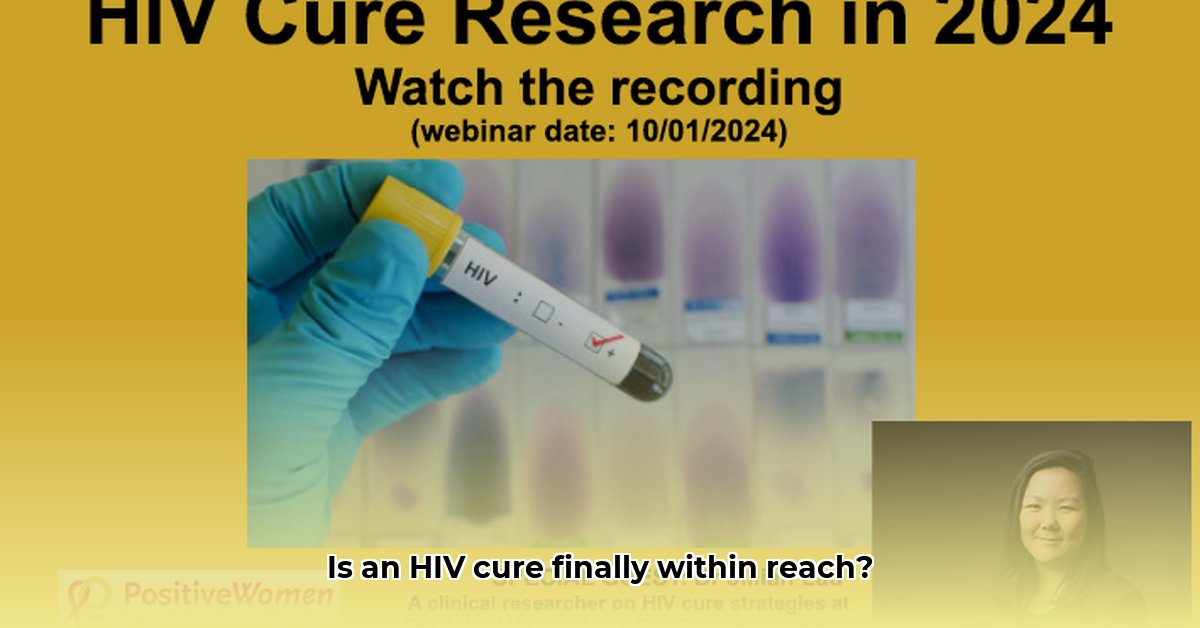The search for an HIV cure continues, driven by the desire to eliminate the need for lifelong antiretroviral therapy (ART). While a complete eradication of HIV remains a challenge, researchers are making significant strides toward a “functional cure”—long-term remission without daily medication. This article explores the most promising clinical trials and research avenues, explaining complex scientific concepts in clear, accessible language.
Promising Advances in HIV Cure Research
Several innovative approaches are currently under investigation, offering hope for a future free from the burden of daily HIV medication.
Gene Editing: Rewriting the HIV Story
Gene editing therapies, like CAR T-cell and TCR therapies, aim to re-engineer the body’s immune cells to target and destroy HIV-infected cells more effectively.
- CAR T-cell therapy: T-cells are extracted from a patient’s blood and modified in a lab to express chimeric antigen receptors (CARs). These CARs enable the T-cells to recognize specific proteins on HIV-infected cells, leading to their destruction. A Phase I/II trial at UC Davis Health is testing “duoCAR” T-cells, a refined version of this technology. Participants must have maintained an undetectable viral load on ART for at least a year.
- TCR therapy (T-cell receptor therapy): Similar to CAR T-cell therapy, TCR therapy modifies T-cells to recognize specific fragments of HIV proteins on infected cells. Companies like Immunocore are developing TCR agents such as ImmTAV, which has shown early promise in disrupting viral reservoirs – the hidden pockets where HIV persists despite ART.
Early results from these therapies suggest they may contribute to a functional cure, but further research is needed.
Latency Reversal: Flushing Out the Virus
HIV can lie dormant within cells, forming reservoirs that are invisible to standard treatments. Latency reversal aims to “wake up” this hidden virus, making it vulnerable to the immune system or targeted therapies. This “shock and kill” strategy involves using latency-reversing agents (LRAs) to reactivate the virus, followed by therapies to eliminate the infected cells.
Several types of LRAs are being investigated:
- Histone Deacetylase Inhibitors (HDACis): Loosen the tight structure of DNA where HIV hides. Examples include Vorinostat and Panobinostat.
- Protein Kinase C (PKC) agonists: Activate cellular pathways that stimulate HIV activity. Bryostatin-1 is one example.
- Toll-Like Receptor (TLR) agonists: Activate the immune system, indirectly prompting HIV reactivation. Lefitolimod is a TLR agonist being studied.
Challenges remain in achieving complete activation of the latent reservoir and managing potential side effects of LRAs. Combination therapies and improved reservoir measurement methods are being explored.
Beyond the “Berlin Patient”: Stem Cell Transplantation and CCR5
The “Berlin Patient,” Timothy Ray Brown, achieved sustained HIV remission after a stem cell transplant from a donor with a rare CCR5 gene mutation that blocks HIV entry into cells. A potential “next Berlin Patient” case in 2024 offers further hope. However, this procedure is complex, risky, and not yet widely applicable due to the rarity of suitable donors. Research continues to explore ways to mimic this natural resistance through gene therapy.
Broadly Neutralizing Antibodies (bNAbs): A Targeted Approach
bNAbs are engineered antibodies that target specific vulnerabilities on the surface of HIV, neutralizing a wider range of viral strains than natural antibodies. Research is investigating the use of bNAbs alone or in combination with other treatments to control or eliminate HIV.
2024 Breakthroughs and Ongoing Research
Recent advancements offer encouraging progress in HIV prevention and cure research.
Prevention Takes a Giant Leap Forward: Lenacapavir
Lenacapavir, a long-acting injectable PrEP, offers a significant improvement in HIV prevention. Administered every six months, it simplifies adherence and boasts high effectiveness. This breakthrough has the potential to significantly impact global HIV prevention efforts.
A Second Chance at a Cure? The “Next Berlin Patient”
The potential “next Berlin Patient” case suggests that achieving a cure through stem cell transplantation might be possible for others, although the procedure remains complex and high-risk. This development fuels ongoing research in this area.
The Path Ahead
While a sterilizing cure remains a significant goal, the progress in HIV remission research is undeniable. Numerous clinical trials are underway, exploring these promising therapies and other innovative approaches. The advancements of recent years, particularly in 2024, provide a powerful reminder of the potential that lies ahead.
Finding Clinical Trials and Resources
For those interested in learning more about HIV cure clinical trials or potentially participating in one, the following resources are invaluable:
- ClinicalTrials.gov: A comprehensive database of publicly and privately supported clinical studies worldwide. It provides detailed information on ongoing trials, including eligibility criteria and locations.
- National Institute of Allergy and Infectious Diseases (NIAID): Part of the National Institutes of Health, NIAID offers valuable information on HIV/AIDS research and clinical trials.
It’s crucial to discuss any potential participation in a clinical trial with your healthcare provider. They can provide personalized advice based on your individual health needs. While there are many exciting developments, staying informed and working closely with your doctor is crucial for managing HIV and making informed decisions about your care. The fight against HIV continues, and ongoing research provides hope for a future where HIV is a manageable, chronic condition.
- Bento Box Trays Streamline Restaurant Meal Presentation and Transport - December 13, 2025
- Plastic Bento Boxes Face Scrutiny Over Sustainability Impacts - December 11, 2025
- Bento Tray Revolutionizes Organized Meal Transport and Presentation - December 10, 2025










